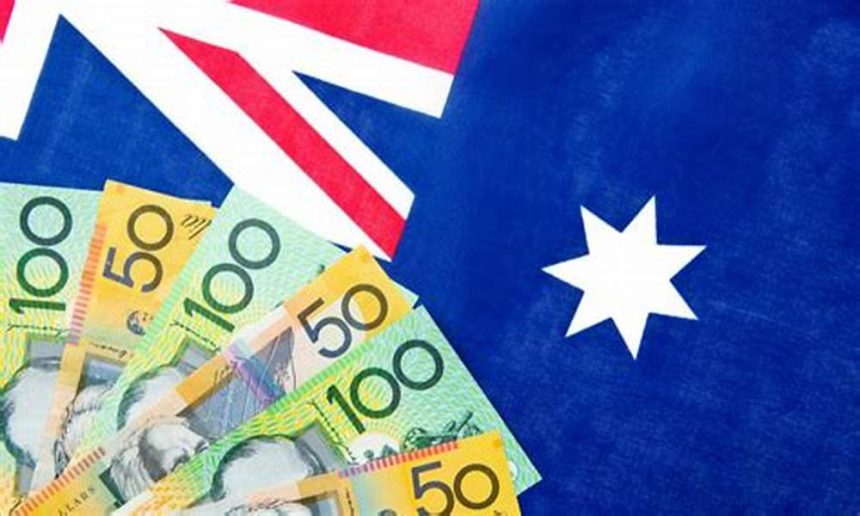Australian Dollar Drops for Third Straight Session
The Australian Dollar (AUD) continued its decline against the US Dollar (USD) on Wednesday, falling for a third consecutive session. The move comes as a mix of domestic and international macroeconomic factors favor the Greenback, pushing the AUDUSD pair lower despite a slight upside surprise in Australian inflation data.
The AUDUSD pair dipped further following the release of Australia’s Monthly Consumer Price Index (CPI) report. The data revealed that inflation remained steady at 2.4% year-over-year in April, slightly above the forecasted 2.3%. While this signaled persistent pricing pressures, it failed to offset the broader narrative dominated by US dollar strength and Australian central bank dovishness.
US Dollar Gains Momentum as Consumer Confidence Rises Sharply
The US Dollar Index (DXY) surged above 99.70 in Wednesday’s trade, building on a more than 0.50% gain from the previous session. The latest leg higher in the dollar was underpinned by a sharp rise in US consumer confidence. The Conference Board’s Consumer Confidence Index jumped to 98.0 in May, up significantly from 86.0 (revised from 85.7) in April.
This uptick in sentiment indicates robust consumer optimism, even amid mixed economic signals such as falling durable goods orders. In April, US Durable Goods Orders dropped by 6.3%, beating pessimistic expectations of a 7.9% decline. This mixed data set suggests that while consumer sentiment is improving, there are still soft spots in the real economy.
Bond Market Optimism Buoys USD Further
The US Dollar also found strength from rising global optimism in bond markets. Japan’s Ministry of Finance signaled a potential reduction in its government bond issuance—a move that has reverberated globally by pushing yields higher. US Treasury yields, particularly on the 10-year and 30-year notes, have climbed to 4.46% and 4.97%, respectively.
Higher yields typically attract capital inflows, strengthening the local currency—in this case, the US Dollar. In addition, markets are awaiting the latest Federal Open Market Committee (FOMC) meeting minutes, expected to provide more clarity on the Federal Reserve’s interest rate path.
Australian Inflation Surprises Slightly but Doesn’t Change the Narrative
While the Australian CPI for April posted a 2.4% annual rise marginally above the 2.3% expectation it wasn’t enough to shift market sentiment meaningfully. The data suggests that inflation is proving stickier than expected, yet not high enough to deter the Reserve Bank of Australia (RBA) from continuing its easing cycle.
The RBA cut rates by 25 basis points last week, citing progress on inflation and emerging external risks, particularly from US-China trade tensions. Although some analysts, such as those at National Australia Bank (NAB), have raised their terminal rate forecasts to 3.1% from 2.6%, the central bank’s tone remains cautious. The odds of another rate cut in July stand at 65%, with a cumulative 75 basis points of easing priced in by Q1 2026.
RBA’s Dovish Stance Weighs on Aussie Outlook
Governor Michele Bullock of the RBA reaffirmed the bank’s readiness to act if the economic outlook worsens. She emphasized that the central bank is closely monitoring both domestic inflation and international developments. Given Australia’s high trade exposure to China, geopolitical tensions are playing an increasingly influential role in policy decisions.
Market participants interpret this stance as an indication that the RBA is more concerned about supporting growth than fighting inflation, especially in light of steady—but not accelerating—CPI readings.
US Fiscal Risks Loom Large Despite Near-Term Dollar Strength
Even as the US Dollar rides high on strong consumer sentiment and bond yields, underlying fiscal concerns pose longer-term challenges. Former President Donald Trump’s “One Big Beautiful Bill,” which includes tax breaks on tip income and incentives for buying US-manufactured vehicles, is set to increase the deficit by $3.8 billion, according to the Congressional Budget Office (CBO).
Senator Ron Johnson has voiced strong opposition to the bill, calling for serious spending cuts and warning of the growing deficit. “Current projections are a $2.2 trillion per year deficit,” Johnson noted, underscoring the unsustainable trajectory of US government finances.
Adding to the caution, Moody’s downgraded the US credit rating from Aaa to Aa1, citing rising debt-servicing costs and declining revenues. This follows earlier downgrades by Fitch (2023) and S&P (2011). Moody’s expects US federal debt to reach 134% of GDP by 2035, up from 98% in 2023.
Geopolitics Add Complexity to Ausyralian Dollar Dynamics
Beyond central bank policy and macroeconomic data, geopolitical tensions are also influencing Australian Dollar movements. Australia’s decision to potentially cancel the 99-year lease of Darwin Port to China’s Landbridge Group has drawn harsh criticism from Beijing. The Chinese embassy called the move “unfair and unethical,” marking a fresh low in bilateral relations.
Tensions with China could affect Australian exports particularly commodities like iron ore and coal—thus placing additional pressure on the AUD. At the same time, a warming of US-EU trade ties offers a risk-on counterbalance. President Trump’s decision to delay EU auto tariffs until July 9 has alleviated some trade tension, contributing to improved market sentiment.
Positive Chinese Data Could Support Australian Dollar Down the Line
Amid the diplomatic friction, China’s economic data remains a potential source of support for the Australian Dollar. Industrial profits in China rose 3% YoY in April, building on a 2.6% gain in March. For the January–April period, profits were up 1.4% YoY, improving from 0.8% growth in the first quarter.
These gains suggest that China’s industrial sector is stabilizing, which bodes well for commodity exporters like Australia. If the Chinese recovery continues, demand for Australian raw materials may rise—potentially lifting the Aussie in future sessions.
Outlook for Australian Dollar: Cautiously Bearish
While short-term dynamics favor the US Dollar, thanks to bond yield strength and upbeat consumer confidence, risks are tilted toward eventual Greenback softness if fiscal concerns escalate. For the Australian Dollar, the path forward hinges on RBA policy clarity, stability in China-Australia relations, and global risk sentiment.
The pair may find interim support if risk-on flows dominate and US fiscal worries intensify. However, as long as markets expect additional RBA cuts and US yields remain elevated, AUDUSD is likely to stay under downward pressure.
[faq-schema id=”39691″]









